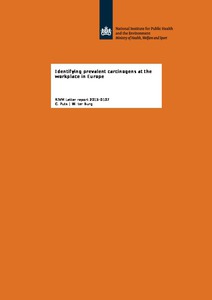Identifying prevalent carcinogens at the workplace in Europe
"The RIVM compiled a shortlist of substances, mixtures and processes identifying carcinogens with the most occupational exposure across Europe. The list also includes processes such as welding, painting and processing mineral oils. Those substances, mixtures and processes ranking highest can be...
| Main Authors: | , |
|---|---|
| Institution: | ETUI-European Trade Union Institute |
| Format: | TEXT |
| Language: | English |
| Published: |
Bilthoven
2015
RIVM |
| Subjects: | |
| Online Access: | https://www.labourline.org/KENTIKA-19112881124919300639-identifying-prevalent-carcinog.htm |
| Summary: | "The RIVM compiled a shortlist of substances, mixtures and processes identifying carcinogens with the most occupational exposure across Europe. The list also includes processes such as welding, painting and processing mineral oils. Those substances, mixtures and processes ranking highest can be selected at a European level for risk reduction by setting binding occupational exposure limit values. The highest ranking substances, mixtures and processes are, among others, benzene, formaldehyde, engine exhaust, and wood dust. These belong to the top 30 of 175 ranked substances, mixtures and processes for which information was available. These substances, mixtures and processes are considered the most prevalent carcinogens at the workplace based on the available data, contributing most to exposure. The report focuses specifically on non-threshold carcinogens. Nonthreshold carcinogens are without a safe level of use. European worker legislation prescribes that those substances should be substituted wherever possible. If this is not possible, employers must ensure that exposure is as low as reasonable achievable. At this moment, the approaches to derive occupational limit values for carcinogens differ among Member States. The Dutch Ministry of Social Affairs and Employment requested the RIVM to compile the shortlist aiming to increase worker safety. Data from six European databases were used, containing information on the number of workers exposed and other indicators. These range from specific worker tasks such as mixing of fluids to uses in chemical industries." |
|---|---|
| Physical Description: | 44 p. Digital |

